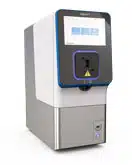All of us at MaxCyte, wish you a wonderful holiday season and happy new year!

This year, we are honored to celebrate two significant milestones. MaxCyte was founded in 1999 so we have been celebrating 25 years of supporting a transformative industry developing novel cell-based treatments that offer hope and new options to patients and their families worldwide.
This year, we are honored to celebrate two significant milestones. MaxCyte was founded in 1999 so we have been celebrating 25 years of supporting a transformative industry developing novel cell-based treatments that offer hope and new options to patients and their families worldwide.
Another major highlight we celebrated this year, was the approval of CASGEVY®, from Vertex Pharmaceuticals and CRISPR Therapeutics. This first ever CRISPR/Cas9 gene-edited therapy is also the first MaxCyte-supported commercially approved cell therapy.
In the news
MaxCyte announces new collaboration
MaxCyte has partnered with University of California San Diego Sanford Stem Cell Institute (SSCI) to enhance patient outcomes and foster workforce development in the biopharmaceutical sector.
Cell and gene therapy updates
Overcome the limitations of conventional transfection with MaxCyte electroporation
Webinar
Now available on demand, this webinar explores how MaxCyte's electroporation technology can help you to overcome some of the challenges encountered when using conventional transfection techniques. Learn how traditional delivery methods, such as chemical transfection and retroviral transduction, compare to electroporation for transient and stable engineering with plasmid DNA, mRNA and CRISPR-RNPs. We will also introduce new approaches for larger-scale electroporation that enable faster workflows, which can save researchers weeks of development time.
Efficient, scalable manufacturing of virus-like particles for the delivery of gene editor ribonucleoproteins using a cGMP-compliant electroporation platform
Scientific poster
We have developed a method to manufacture virus-like particles (VLPs) for genome editing using the MaxCyte ExPERT GTx electroporation instrument. This approach significantly improves the yield and efficiency of VLP production compared to traditional transfection methods. Our results show over a 10-fold increase in capsid titer and also demonstrated effective genome editing at the B2M locus using CRISPR-Cas9 and base editor ribonucleoproteins. Additionally, this method offers favorable production kinetics and scalability, making it a promising solution for future clinical and commercial applications.
Next-Generation genetic discovery systems in human immune cells
Webinar hosted by The CRISPR Journal
- How synthetic genes can be integrated specifically at endogenous genes to engineer T cell specificity
- The benefits of pooled screening systems
- How pooled genetic perturbations can be combined with high dimensional, single-cell phenotypes
High efficiency complex gene editing of hard-to-transfect primary cells using MaxCyte electroporation in combination with Synthego sgRNAs
Poster
Cell-based therapeutics using engineered primary cells hold great promise for treating a variety of diseases, including cancer and autoimmune disorders. Increasingly, researchers are using complex CRISPR gene editing strategies to develop highly engineered cell therapies with greater potency, more favorable safety profiles, and better manufacturability than previous generations of cell therapies. These CRISPR-based editing strategies often involve introducing multiple edits – including both knockouts and knockins – performed either in sequence or simultaneously to generate highly engineered cell products tailor-made for a specific disease of interest.
Case study

From roadblocks to breakthroughs, unlocking clinic-ready efficiency
In this case study, Andrew shares a story about how we supported an established cell therapy developer who was struggling to achieve the necessary efficiencies needed to progress their product into the clinic. Through collaboration between MaxCyte's Field Application Scientists and the developer's scientific team, they identified modifications to the knockout strategy, resulting in a significant efficiency boost from 15-20% to 90%.
Focus on

Interview with Jeremy Kolenbrander, SVP, Product Development and Engineering
IIn this issue we higlight Jeremy who has over 30 years of experience driving innovation across various industries, Mr. Kolenbrander joined MaxCyte in 2024 to lead new product development and deliver impactful solutions for customers. In this interview he emphasizes, "We collaborate with our customers to develop solutions that are indispensable for their investigations and clinical material production." Recognizing the value of diverse perspectives, he adds, "It’s crucial for MaxCyte’s scientists, marketing and sales teams, and engineers to engage directly with a wide variety of customers." This collaborative, multidisciplinary approach ensures no aspect of a challenge is overlooked, enabling MaxCyte to deliver comprehensive solutions that empower customers in their day-to-day efforts. Read more. . . .
Customer testimonial

"For our lab, we are new to the technology, and so we wanted to partner with a company that offered great products and great customer service. They (MaxCyte) are willing to go the extra mile to help their customers with any questions or problems they may be having. They are generous with their time and patiently go through the training process with our team."
Joe Huey, Development Technologist I
Upcoming events
We are excited to attend multiple conferences and host many institutional seminars and events. Find all the latest on our events page.









